These days we “swipe” to make a purchase. Holding our credit or debit card, we move its encoded magnetic strip through a slot in a portable reader that decodes the digital information embedded in the strip and makes the appropriate calculation to remove the required amount from our bank account. Nothing nefarious, just a microcosm of commerce.
Before the digital age, the most common meaning of “swipe” still involved moving one’s hand in a crossword motion, however, this time the only ‘magnetic force’ involved was the removal of something that didn’t belong to you. Here’s how Jules Feiffer defines this act of lifting something that doesn’t belong to you as it relates to the comic book world: “Swiping was and is a trade term in comic books for appropriating that which is Alex Raymond’s, Milton Caniff’s, Hal Foster’s or any one of a number of other sources and making it one’s own. Good swiping is an art in itself. (The Great Comic Book Heroes, Bonanza Books NY 1965).”
Swiping is a recognized part of the comic book artist’s pallet. All artists have reference files they can draw upon, that they can go to when needed to produce an illustration and, for comic book artists, a ‘swipe file’ is just a subset of that reference file.
During the period of the Canadian wartime comics, deadlines came fast and furious. Not meeting a deadline meant delaying or even missing a paycheck. Some of the artists, especially the younger ones, often defaulted to swiping under the pressure or these deadlines. But what did they have to swipe? American comics weren’t coming into the country. Of course, they still had Sunday Comics Sections and dailies in the Newspapers. These were full of Foster, Caniff, Raymond, and others. Eisner’s Spirit Sections still came through to a few places. Our wartime comic book artists, like much of the population, often made trips down to Buffalo and New York City and just about anywhere in the States for various reasons. They could easily have picked up a number of US books and brought them back (illegally) across the border. Finally, American superhero comics had been around in Canada for a couple of years before the ban took effect in December of 1940 and our comic book artists would have had access to these.
This last scenario produced the most blatant and awkward set of swipes in WECA comic book history. It involved Ross Saakel and was first brought to light by Michael Hoskin in his Section 244 blog for April 23, 2015. Daring Mystery Comics No. 6 full of wonderful Kirby stuff had a cover date of September 1940, well before the ban on American comics. Ross Saakel certainly had one on his drawing table as he began doing his character Captain Wonder in Triumph Comics in the spring of 1942.
Now Captain Wonder was Bell Features thinly veiled answer to Fawcett Publications Captain Marvel. Saakel was probably asked to contribute one costumed hero to the Bell Constellation probably by Cy Bell himself. You can easily see the origin similarities in these first two pages from the first Captain Wonder story in Triumph Comics No. 7:
This may be considered a rip-off of some sort but it’s not yet a swipe, but here is a definite swipe! Compare the bottom half of p. 8 of the Marvel Boy story in Daring Mystery Comics No. 6 with the third page of the Captain Wonder story from Triumph Comics No. 8:
Now go on to compare the next page of that Captain Wonder story to the next page from that Marvel Boy story:
One thing that you might notice is that in the Marvel Boy story when they get on the U-Boat the writer chose to say, “Heil Hiller” while Saakel explicitly chose to say, “Heil Hitler.” I wonder if the American panel was simply a typo or if the writer was simply avoiding any controversy because the Americans were not yet in the war.
There is also the last panel on page 2 of the Triumph 8 Captain Wonder story which is a direct swipe from the iconic Bob Kane panel from Detective Comics No. 33, which itself is a swipe from a Hal Foster panel that appears in the Tarzan collection compiled in Large Feature Comic No. 5. The wheel goes round and round.
Saakel, however, hadn’t finished milking the Daring Mystery Comics No. 6. This time he turns to the Fiery Mask story in that issue. Here is the second page of the Fiery Mask story followed by the second page of the Captain Wonder story:
A little bit of rearranging of the graphics but the text follows closely. Here are some other panels from the Fiery Mask story in which the graphics correspond more closely with the Captain Wonder story from Triumph 9:
Despite all these swipes, Saakel wasn’t yet finished with that 6th issue of Daring Mystery. If you jump ahead a few issues to Triumph Comics No. 13, there Saakel’s splash panel for the Captain Wonder story is a direct swipe of Kirby’s cover for the Daring Mystery comic.
Now Saakel isn’t the only swiper on this scale. Gerry Lazare had his moments as well. Here are a few pages from his “The Wing Meets Nitro” story in Joke comics No. 17 followed by corresponding pages from the “Phantom Lady” story from Police Comics No. 20.
Also, take a look at Gerry’s splash panel for his “Phantom Rider” story from Wow Comics No. 24 along with Adrian Dingle’s take (probably an unknowing swipe) from the cover of Wow 24 finally followed by Mort Meskin’s original source for these, the cover for Leading Comics No. 5 featuring Vigilante (Thanks to Art Cooper for picking this one out):
Gerry must have picked up Leading Comics No. 5 on one of his trips to the States or have had someone bring it back from the States for him. Since it came out in late 1942, Gerry must have just turned 15 and he didn’t start working for Bell until about a year later when he had just turned 16.
One last Lazare swipe to note. This is the splash for Gerry’s “Jeff Waring” story in Wow Comics 25 followed by an Alex Raymond illustration that is probably from one of his Sunday “Jungle Jim” strips.
The last set of WECA swipes are owned by Aram Alexanian. The first is really a whole character swipe but the panel I want to show is the splash panel from the “Black Falcon” story that appeared in the same issue that Gerry Lazare’s Alex Raymond Jungle Jim swipe appeared, Wow Comics No. 25. First is Alexanian’s splash followed by Reed Crandall’s cover for Military Comics No. 13:
The next one is Alexanian’s splash panel for his “Action in the Pacific” strip from Commando Comics No. 14. This is the well-known fried Tojo calamari panel but it may be even more well known as the illustration on the cover of U.S. Marines Comics No. 3 (thanks to Stephen Lipson for pointing this swipe out). Both illustrations follow:
There you have it, a few of the WECA swipes of which I am aware. Perhaps readers can point us in the direction of a few more.
Here are the WECA results from the July ComicLink Auction:
| Canada Jack nn | 4.5 | $670 |
| Commando 13 | 5 | $523 |
| Wow Comics 5 | 4.5 | $500 |
| Grand Slam V3N48 | 8 | $449 |
| Real Boys Stories 1 | 3.5 | $425 |
| Three Aces V2N3 | 3 | $384 |
| Three Aces V2N11 | 1.5 | $384 |
| Three Aces V2N12 | 2.5 | $355 |
| Grand Slam 54 | 6 | $349 |
| Three Aces V1N12 | 3 | $334 |
| Can. Heroes V5N5 | 7.5 | $329 |
| Freelance V2N10 | 3 | $324 |
| Commando 9 | 0.5 | $310 |
| Freelance V3N2 | 4 | $304 |
| Freelance V3N1 | 3.5 | $299 |
| Freelance V2N5 | 4 | $295 |
| Grand Slam V1N12 | 1.8 | $285 |
| Funny Comics 15 | 1.8 | $255 |
| Three Aces V3N12 | 2 | $245 |
| Can. Heroes V2N5 | 0.5 | $200 |
| Can. Heroes V5N1 | 1 | $189 |
| Three Aces V1N6 | 0.5 | $170 |
| Grand Slam 47 | 5 | $159 |
| Funny Comics 6 | 0.5 | $155 |
| Three Aces 51 | 3.5 | $150 |
| Grand Slam 56 | 7 | $135 |
| Three Aces 53 | 4 | $130 |
| Weekender V1N1 | 2.5 | $120 |
| Robin Hood 34 | 5.5 | $46 |
| Robin Hood 31 | 6.5 | $41 |
| Robin Hood 33 | 5 | $37 |
There were 31 comics that sold for just over $8,550 making it an average of about $275 per book. The overall question is whether or not the WECA bubble has burst?
The results at the bottom of the list seem to indicate this with the three late colour Robin Hoods and the first issue of Weekender going for about half of what the prices they should have achieved. But this isn’t unusual for an auction where a handful of books are always picked up as bargains. The rest of the prices achieved do show, I think, a solid and stable set of numbers given the conditions. I don’t think that we should abandon ship on the WECA comics market because of these.
The WECA comic market may be plateauing because of the relative glut of Canadian wartime books that has shown up on auction sites (especially ComicLink) seems to be drying up. There were no good Bell hero books or hard-to-find Maple Leaf books that are always in demand and tend to achieve the higher prices. The $670 achieved by the 4.5 Canada Jack compendium is a solid price and the $425 achieved by the previously unknown Real Boys Stories pulp with the 16-page comicbook-type story that is the origin and first appearance of The Atomic Man was another solid price.
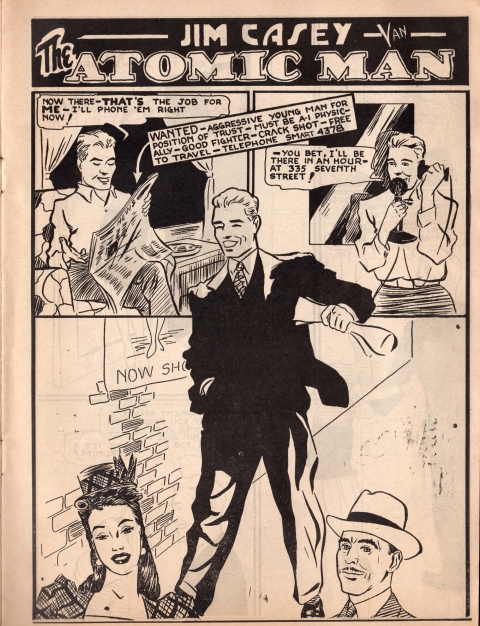
I think that what really starts to drive up of WECA comics in a ComicLink auction is whether or not there are two or three bidders hotly interested in acquiring the same book—then the sparks seem to fly.
Let’s wait and see what happens in the next ComicLink auction where there is a 5.0 copy of the Nelvana one-shot compendium on offer.


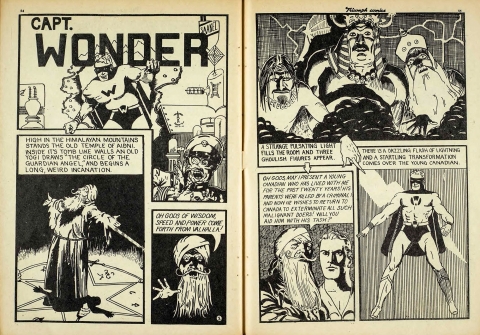
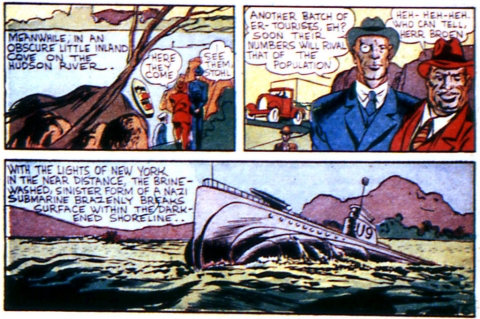
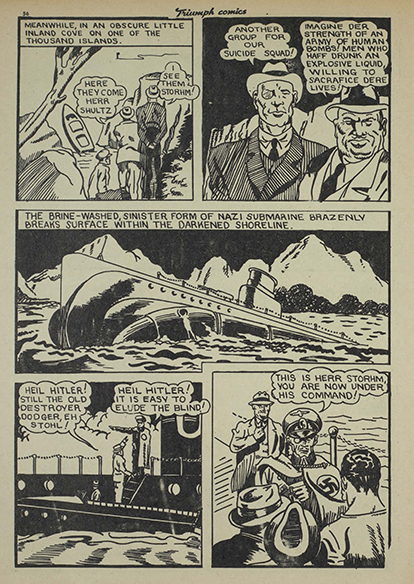
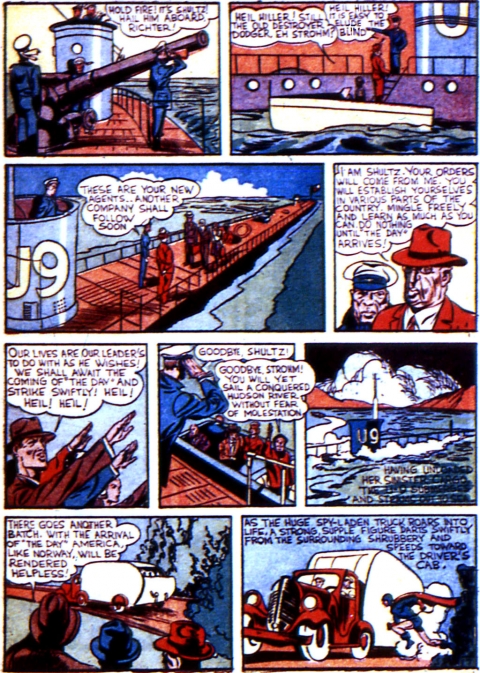
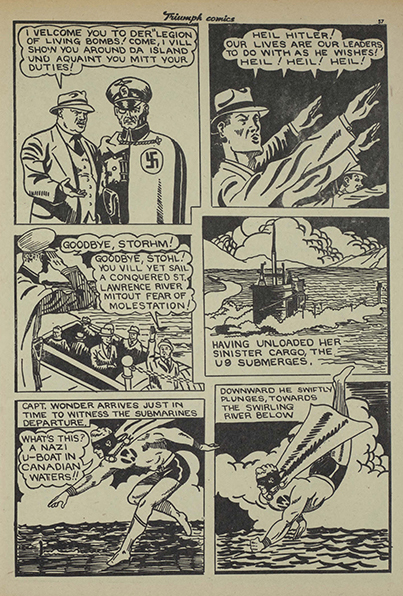
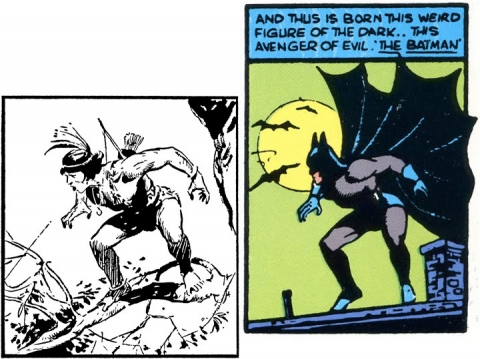
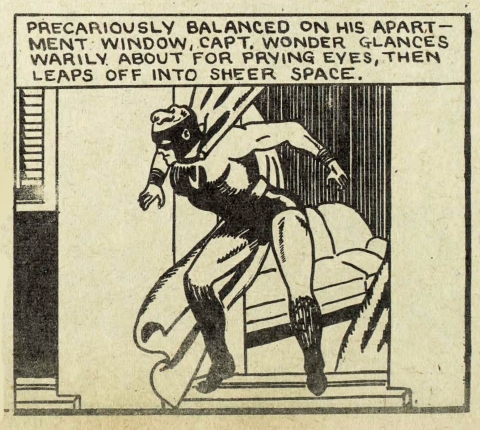
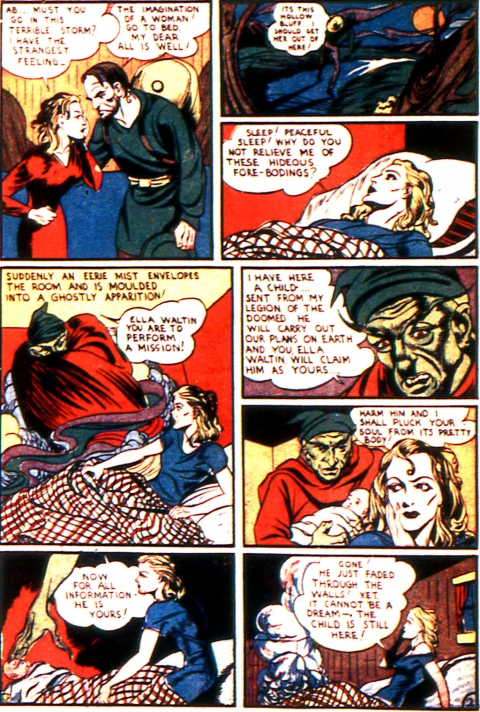
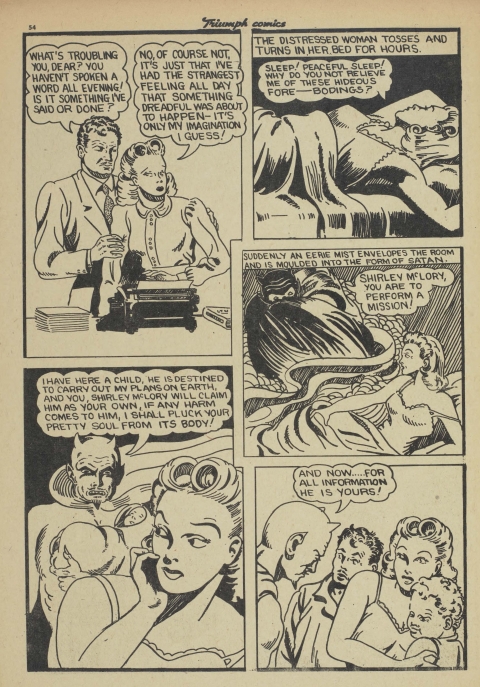
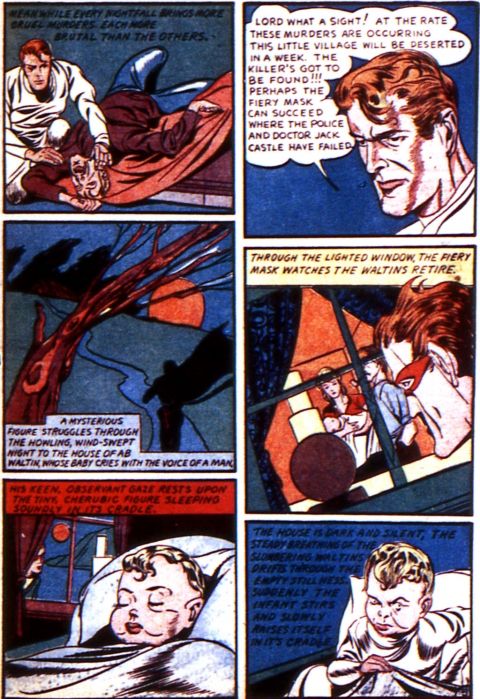
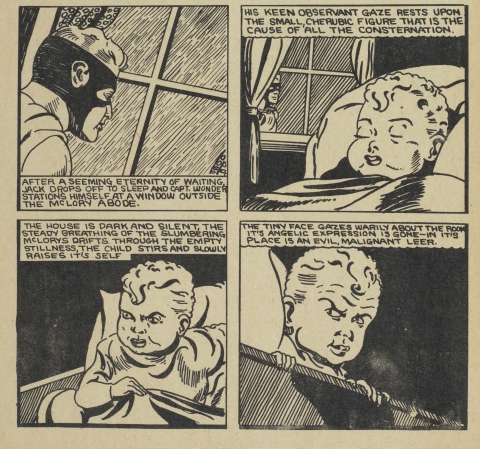
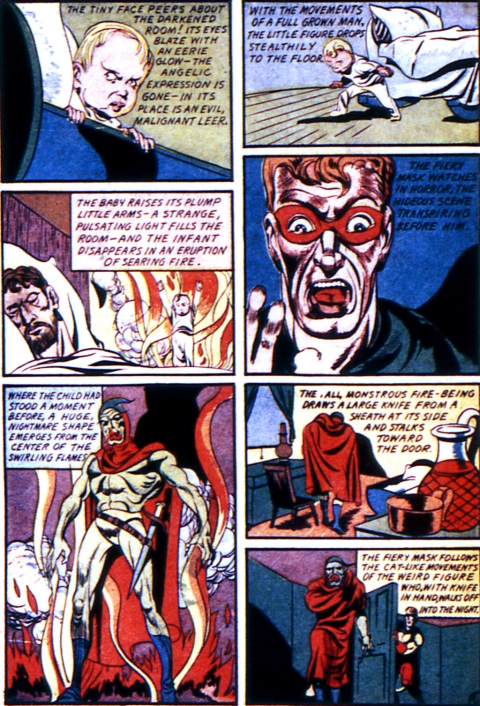
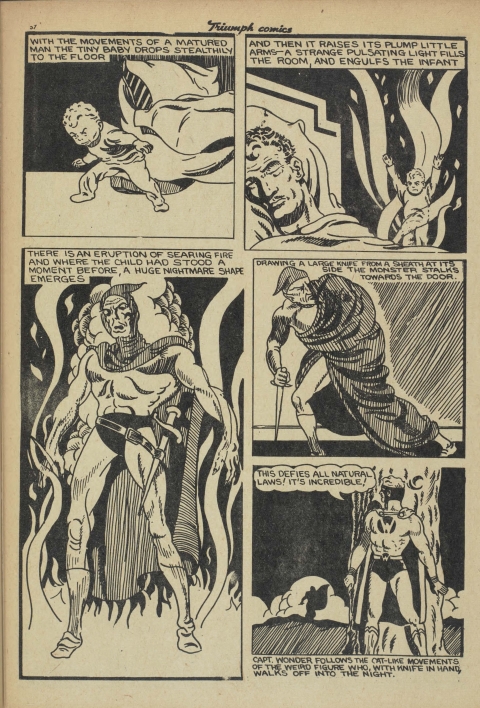
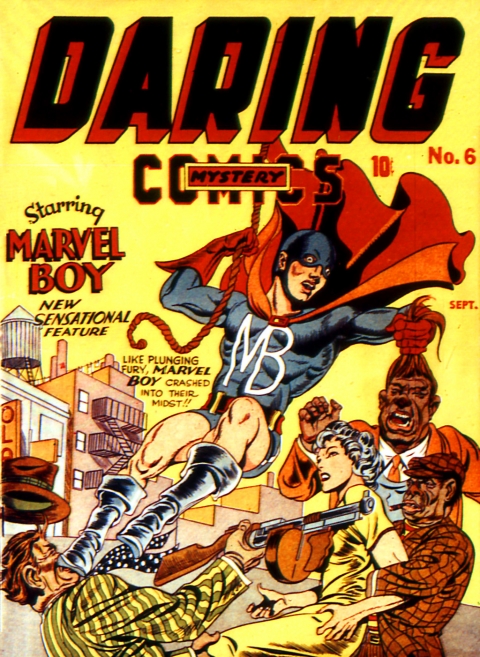
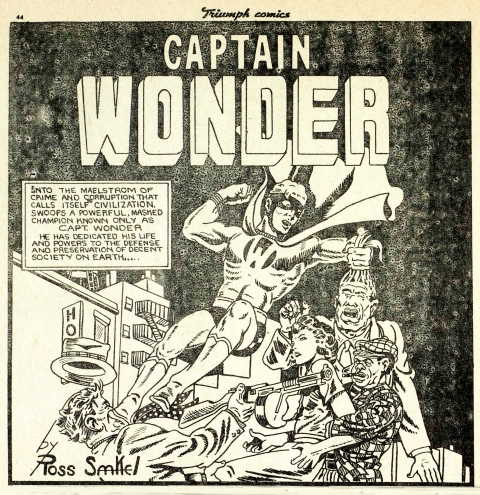
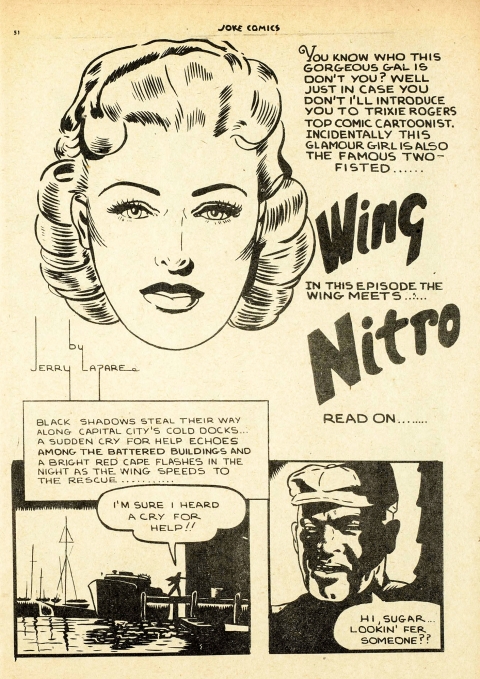
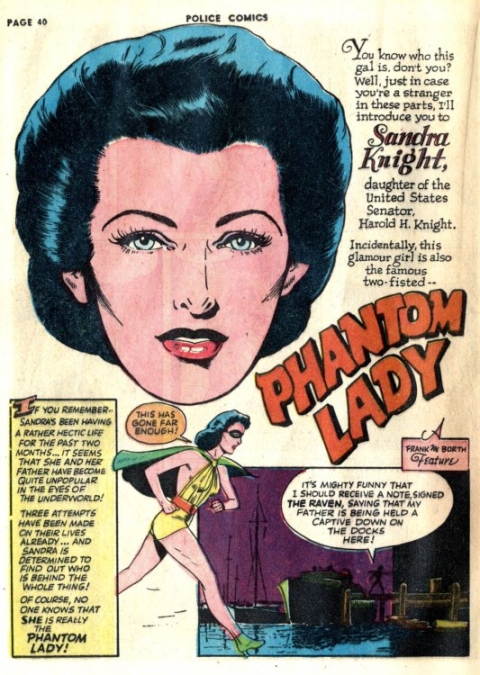
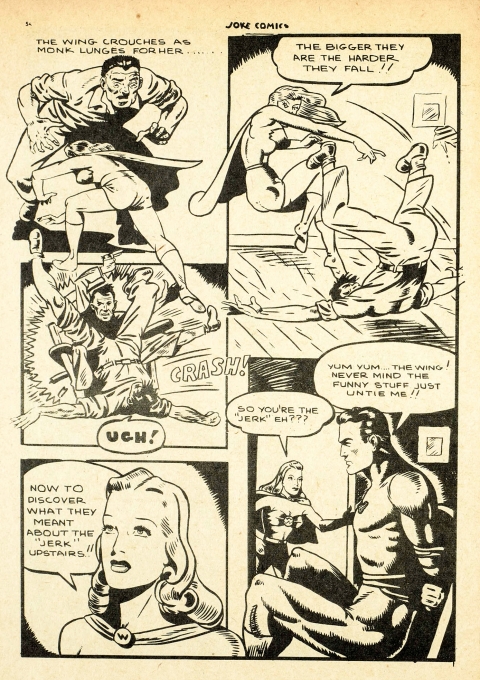
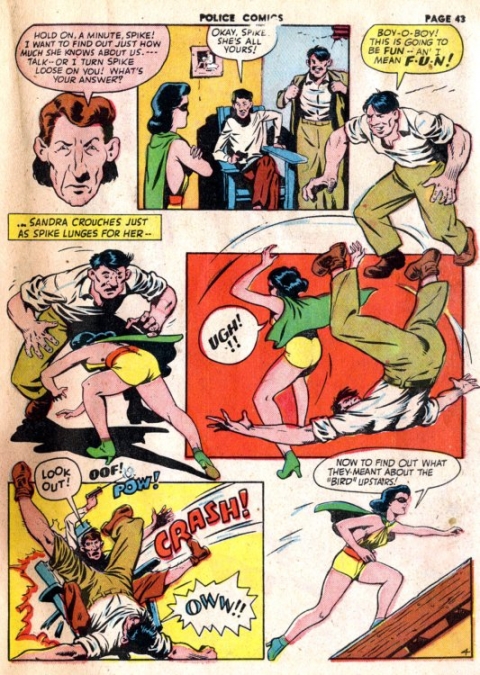
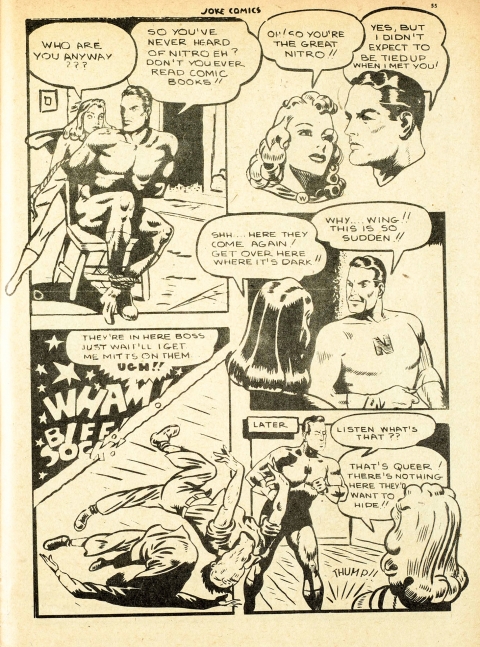
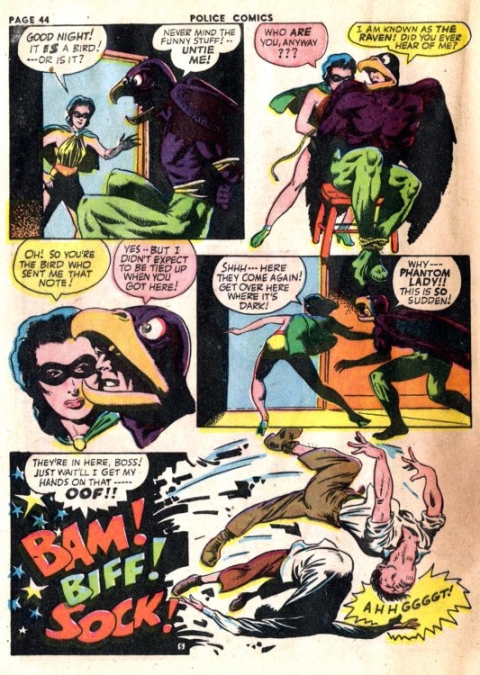
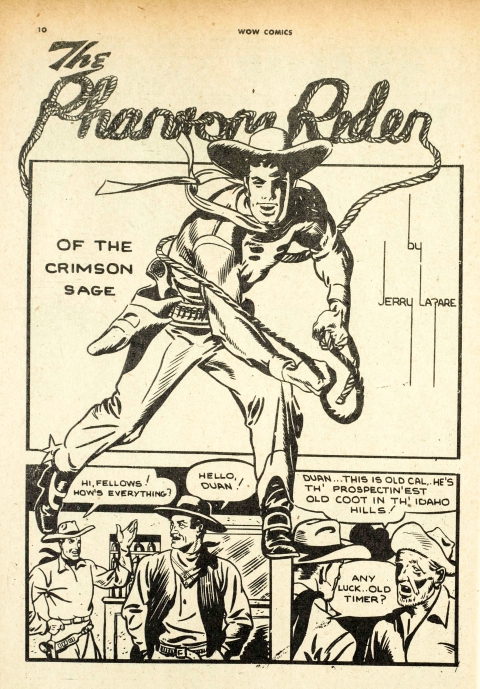
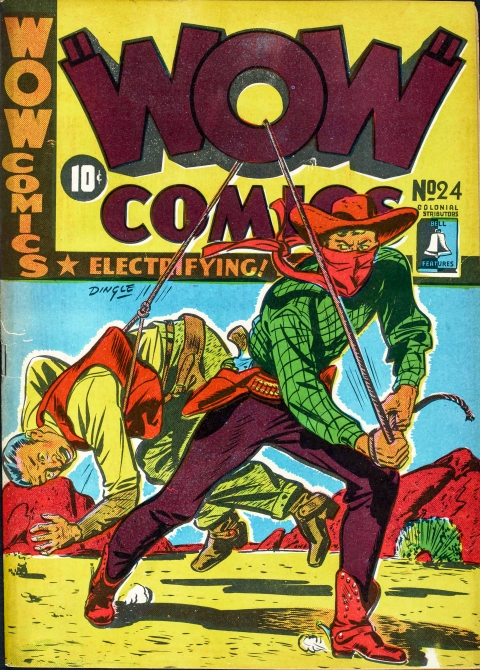
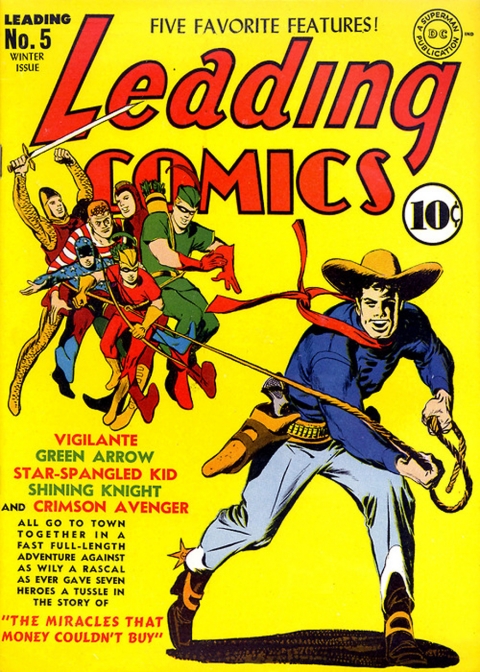
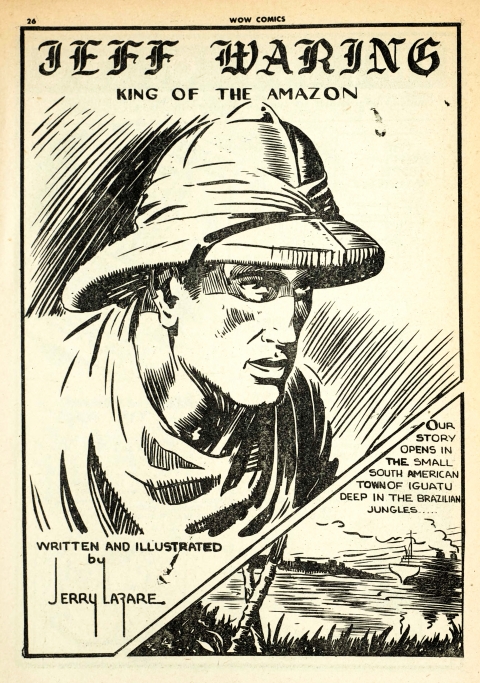
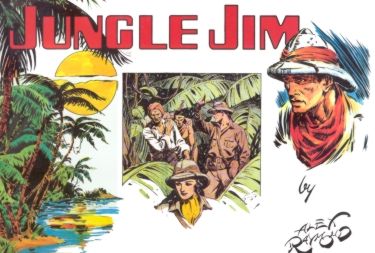
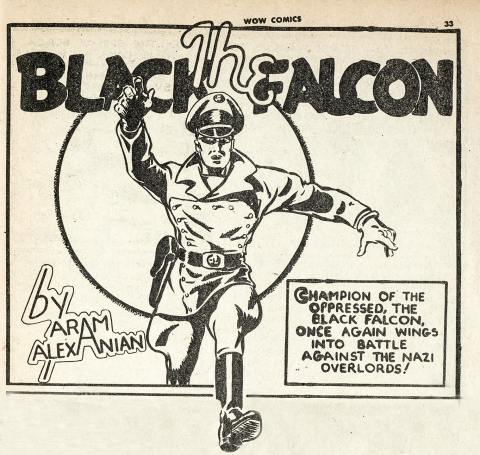
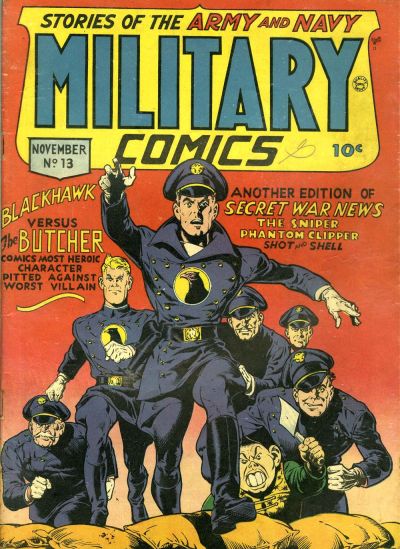
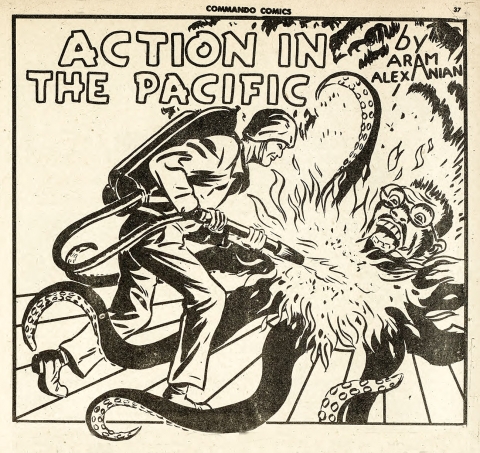
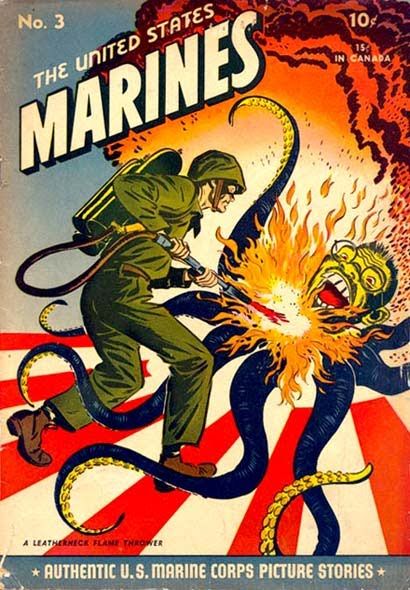



Forgot to mention, thanks to Jim Finlay for sending along the scan from that first Atomic Man story in Real Boys Stories No. 1.
Thanks for the analysis of the swipes and the market analysis. Both were fascinating.
Fantastic Ivan. Very interesting to see the renditions side by side. In the art world they call this “appropriation” and requires re-contexualization in order to not be accused of stealing. There was a guy on the CGC boards who only collected different interpretations of McFarlane’s famous Spidey #1 cover:
http://i.ebayimg.com/images/i/140991259353-0-1/s-l1000.jpg
I was amazed to find out how many times the Spidey #1 cover has been re-purposed… about a dozen by McFarlane himself. Although, these days they call it a… “homage”. Ha.
By the way… your intro is almost poetic ^_^
Swipes, eh?
Aaah, you post wwweb young whippersnapers and your revisionist histories.
Re: swipes…first brought to light by Michael Hoskin…2015 – ha, I believe one of the first to bring these to light was in the old fanzines.
Why sonny, I can remember when we had to walk 20 miles in deep snow to read about them by Ron Kasman back in ’72 in the Comic Fandom Monthly loc (#7). If you are looking for more examples of swipes, have a good look at Leo Bachle’s work on things like Invisible Commando and such for other’s. Hey I wonder what ever happened to that Kasman guy?
cheers, ~jim b.
5
Thanks for the kind words Charlie and mighty. Jim, your sarcasm is very much appreciated and thanks for pointing us in the direction of Bachle for more swipes possibilities.
Hey Jim
Ron Kasman is still very much involved in comics work, having contributed the title story for Growing Up With Comics (Desperado Publishing, 2008), as well as having just released the graphic novel The Tower of Comic Book Freaks from Chapterhouse just this year. You can also catch quite a few of his shorter pieces in Negative Burn from Image/Desperado just a few years back. I have been privileged to share space in two of those books with Ron over the years. There is still a wealth of stories left in the man, so stay tuned.
And Ivan, what can I say? You just knock it right out of the park with every damned post. It’s just uncanny!
cheers, mel
Hey Jim
Ron Kamsan is still very much involved in comics having just released his graphic novel The Tower of Comic Book Freaks from Chapterhouse just this year. You can also catch some of his shorter pieces in Negative Burn from Image/Desperado a few years back and Growing Up With Comics (Desperado Publishing, 2008). I have been privileged to share space with Ron in a couple of those books over the years.
And, Ivan, what can I say? You just hit it right out of the park every damned time!
cheers, mel
Thanks for your continued kind words, Mel, but I must correct you that Ron’s Tower of Comic Book Freaks was from Caliber Comics but maybe Chapterhouse will pick it up one day.
Also… Jim, you’re right. I worded that mention of Michael Hoskin and the Section 244 blog clumsily. It was only the source of my awareness of Ross Saakel’s swipes from Daring Mystery Comics No. 6. The way I worded it, it came out as if it was the first time I’d been made aware of swipes. Of course, I was first made aware of comic book artists’ swipes when I read Feiffer’s book back in 1965. One more edit and I may have gotten it better. Deadlines not only cause swipes but also clumsy mistakes.
Yikes, you’re absolutely right about Tower of Comic Book Freaks. Sorry Ron! And sorry CBD readers that I repeated myself after my initial comment failed to appear the first time I posted.
cheers, mel
Here’s an example from the art world… from Raphael (not the Turtle) to Raimondi to Manet to Picasso and many others
https://parodiesandvariations.files.wordpress.com/2012/12/manet-after-marcantonio-after-raphael-judgment-of-paris.jpg
Some believe that the original came from a relief sculpture. Just a little art minutiae for art lovers. Mahalo!
Thanks for this, Charlie. I wonder if it is a function of plain laziness on the part of the artist. I wonder what it says about integrity and imagination. Pop music is full of swipes as well and perhaps can be excused as more unconscious than when it’s done in the visual and plastic arts.
The image of Speed Savage on the cover of Triumph Comics #15 is a swipe of Sandman (including costume) from Adventure Comics #77. The hands were re-positioned to hold guns.